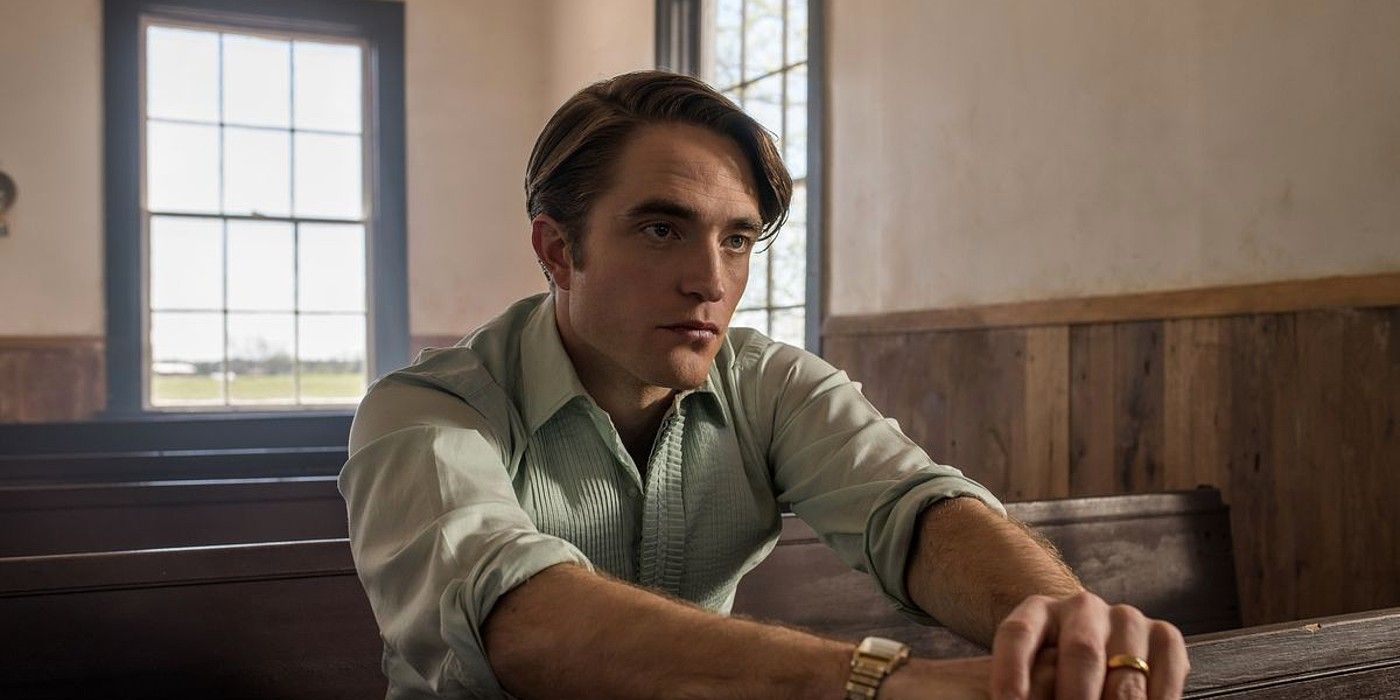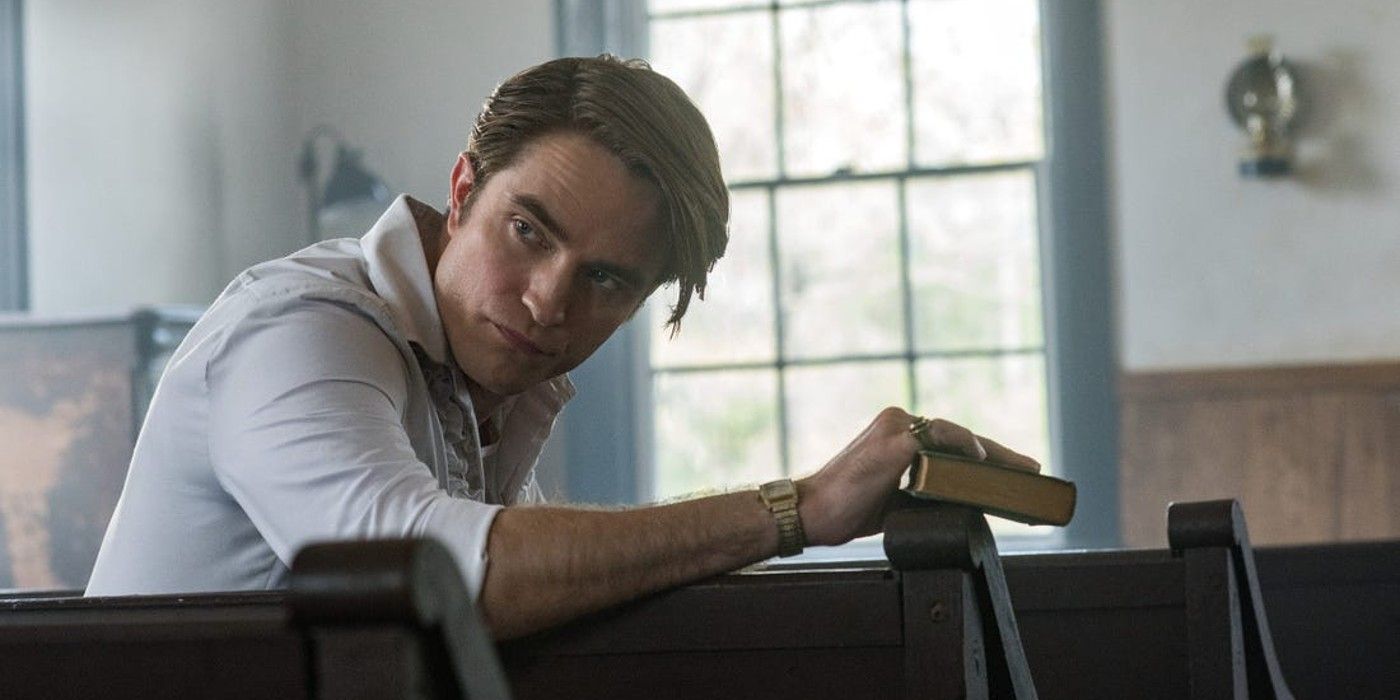Antonio Campos's 2020 psychological thriller The Devil All The Time stars Robert Pattinson as a corrupt preacher with a questionable accent. Since the movie's release on Netflix, fans have questioned the authenticity and reasoning behind his supposedly Tennessean Southern twang. The smallest misrepresentation of a specific accent has the power to pull a viewer out of their viewing experience; here's how Robert Pattinson's affected The Devil All The Time.
English actor Robert Pattinson is known for taking on various roles in an array of genres. He first skyrocketed in popularity with his role as Cedric Diggory in Harry Potter And The Goblet Of Fire, which led to his iconic role as the sparkling vampire Edward Cullen in the Twilight saga. The actor is well versed in performing American accents, but when it came to delivering one that was based in a specific region in the South, he underwhelmed many and even added a comedic element to one of the movie's most sinister and unsettling characters. In The Devil All The Time, Pattinson portrays Reverend Preston Teagardin, who hails from Tennessee. He has come to preach in Coal Creek, West Virginia where the accents are heavily influenced by their Appalachian heritage.
With accents coming from Ohio, Virginia, West Virginia, and Tennessee, the differences may appear to be few and far between due to the fact that all four states are relatively close together geographically. When Pattinson's Tennessean accent is introduced in the movie, it completely draws the attention away from the deeper Appalachian tones of the beginning of the Midwest and South. Robert Pattinson's performance affected the movie in both positive and negative ways, but the reception from critics and audiences has been overwhelmingly disappointed in the accent's inclusion.
Reverend Preston Teagardin comes to Coal Creek, West Virginia to take over preaching for his uncle. Coming from Tennessee, he brings with him an flair for performance, an Elvis Presley inspired appearance, and a high-pitched southern twang. Its polarizing in comparison to Arvin Russell's (Tom Holland) deep accent that consists of rolling vowels. The Reverend's accent is softer and less embedded into his person. Pattinson's delivery is also much weaker than his co-stars. Fans have attempted to locate what region the accent comes from, but there is no possible explanation for it.
Tennessean accents are not normally high-pitched or low-pitched—they tend to stay somewhere in the middle. While they also have Appalachian influence, they do not sound the same as West Virginia's. Where Pattinson's character grew up would shed light on why his accent is the way it is, but there is little to no information on who the Reverend is besides a coercive predator from the South. Undoubtedly, Pattinson's character was influenced by Elvis Presley, who had roots in Tennessee. The Reverend wears a pinky wring and gold wrist watch—just as the king did when he was alive. The suits he wears also resemble traditional Presley attire, and his hair mirrors the musician's toward the end of his life.
Preston Teagardin is a ladies man who uses his status in the community to coerce young women to sleep with him. Therefore, his appearance, personality, and possibly his accent can all be attributed to Elvis Presley's influence. Despite the connection between the two, Pattinson's accent is still an unbelievable representation of Tennessee, and is an obvious low point of an otherwise strong story. If Elvis Presley's voice was a few registers higher, one could make the case that Teagardin was meant to be a direct reference to the Tennessee musician, but this connection hasn't been confirmed. Regardless, Pattinson's poorly performed Southern twang took away from the serious tone of his character and the overall aesthetic of The Devil All The Time, making him seem somewhat comedic at times despite being one of the most villainous characters in the movie.


